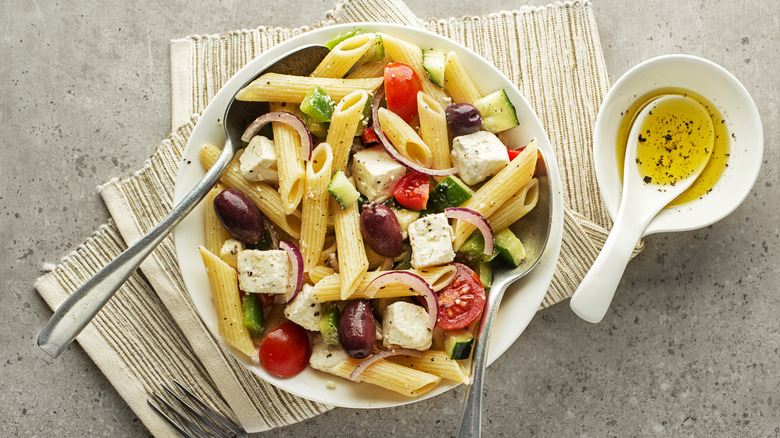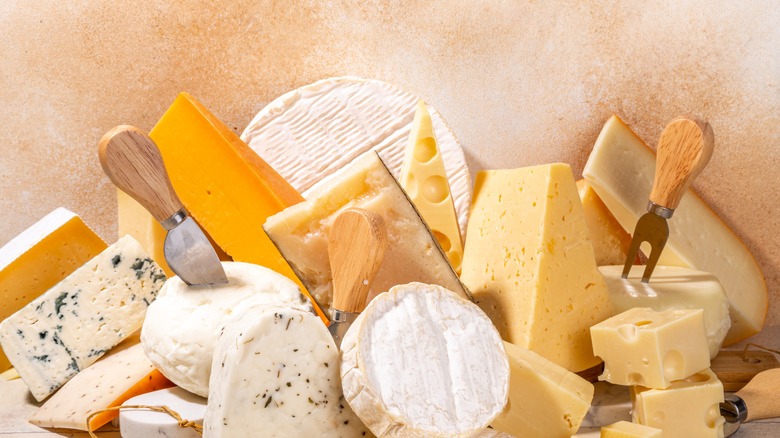The Cheese Toppings That Never Belong In A Pasta Salad
Pasta salad lends itself to a world of delicious possibilities. Although there aren't really many rules for what exactly should go into the starchy salad aside from pasta itself, the best renditions tend to juxtapose all sorts of flavors and textures. Yet, while a mix of ingredients can give salad pizzazz, certain additions can also be the very pitfall of a pasta salad. Depending on the variety, cheese can actually be one of those iffy ingredients.
Not all cheese is created equal, but if you're a fan of all things dairy then you already know this to be true. Varying in both moisture and age, a particular cheese will fall into one of several categories: fresh, soft or semi-soft, semi-firm, or hard. Given that different cheeses boast different consistencies, it's only natural that some would be more suitable for some recipes than others. That said, the best options for pasta salad are typically either fresh or hard cheeses that are grated or shaved.
This means that, soft and buttery cheeses with a rind, especially those that are double or triple cream like Camembert, Robiola, or Brie prove far too gooey for a pasta salad. Lacking proper structure, they become unpleasantly slimy as they sit in a dressed salad. But even slightly firmer cheeses like Monterey Jack, Taleggio, or Comté can present challenges. Though they can maintain their shape, these softer selections risk sweating, which can lead to a less-than-aesthetic outcome.
Instead, these are the ideal cheeses to use in pasta salad
In place of soft and semi-hard cheeses — which can be well suited to hot pasta dishes — the best cheeses for an out-of-this-world pasta salad are either ultra-fresh or ultra-firm varieties.
Soft cheeses like milky mozzarella pearls or brined feta mainly work to amp up the creaminess of a pasta salad. Because they are extremely moist, fresh cheeses lend both a soft bite and delicate richness to the dish, reducing the need for copious amounts of dressing or oil. If you prefer larger chunks rather than a crumble of fresh cotija, feta, or goat cheese in your pasta salad, it is best to add it after seasoning and mixing the salad, so they remain mostly intact.
Alternatively, while hard cheeses don't do much for texture, they infuse loads of funk and flavor into recipes. Given that firm cheeses have undergone lengthy aging processes, they are rich with umami and complexity, all while being nearly bone dry. Look to Parmigiano Reggiano, Asiago, or Manchego viejo as sources of inspiration.
The bottom line is this — fresh or aged, the cheese you choose has the power to differentiate a passable pasta salad to one that captivates even pasta salad non-believers.

